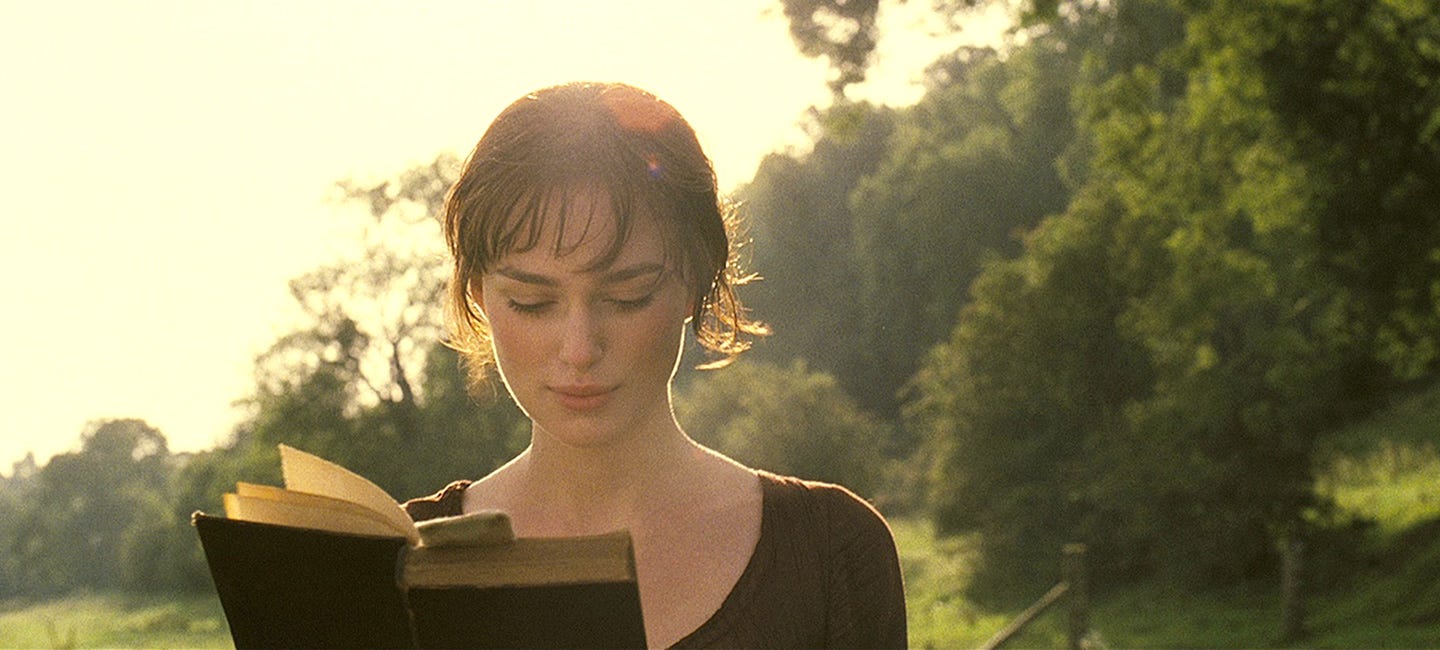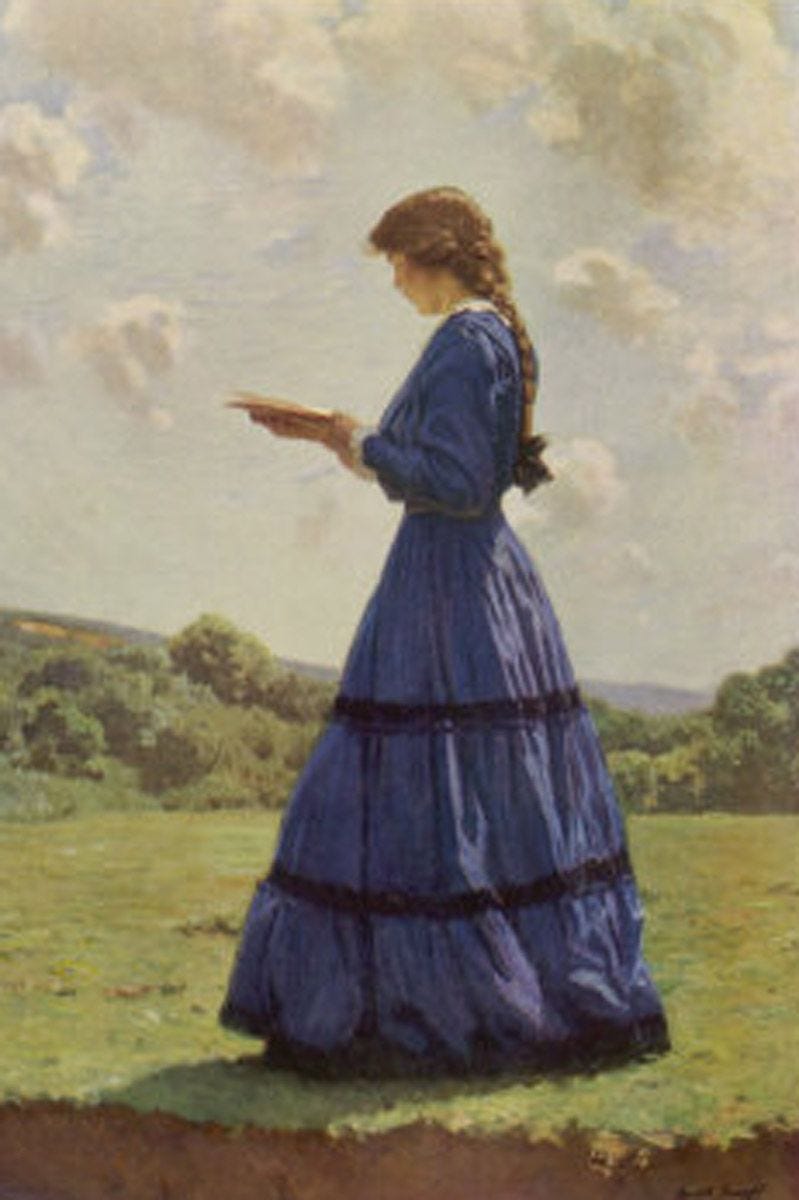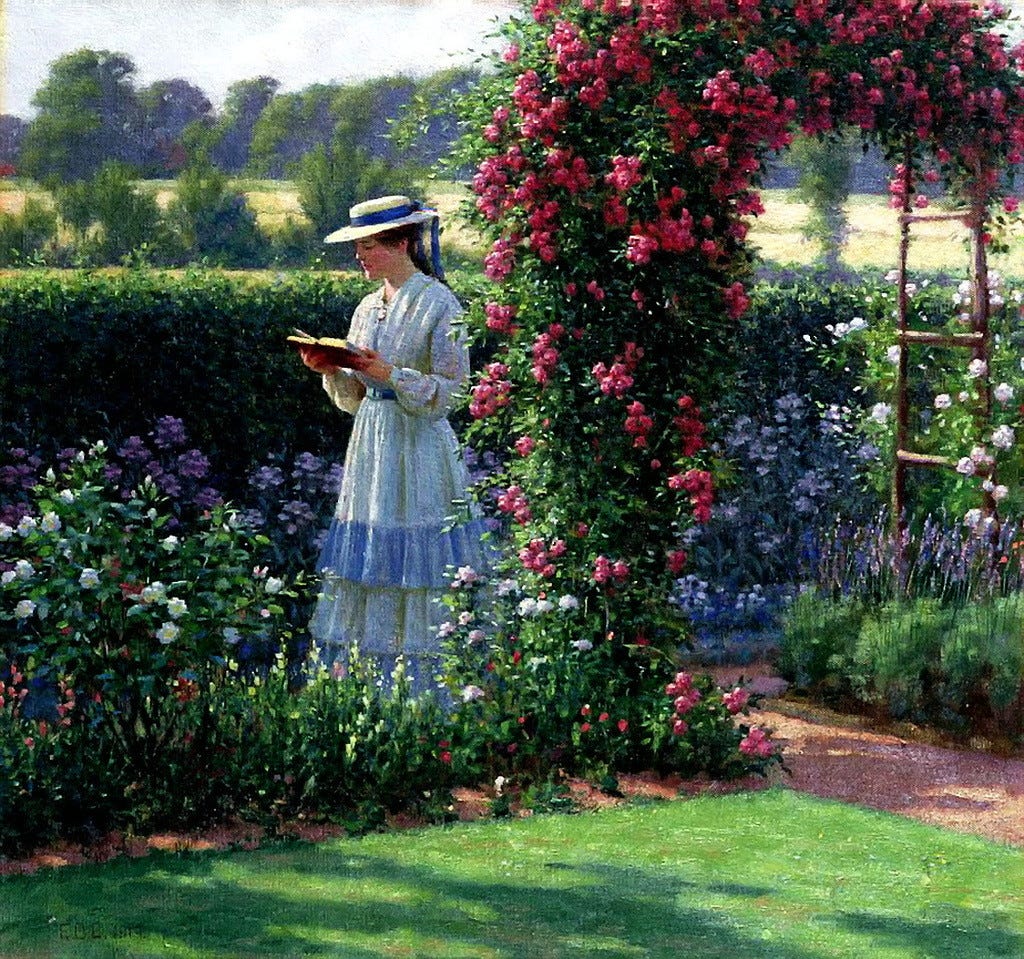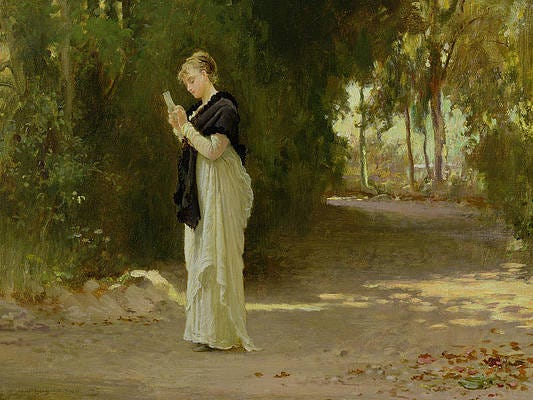Read Walking: A Pastime of Regency Women?
Was reading while walking a popular trend in Jane Austen's day? Modern Austen investigates & speculates.
This is a trend of my own creation, I suppose, one I’ve imposed on the past after happening upon a few images of 18th- & 19th-century paintings that depict young women walking while engrossed in a book. And let’s not forget the scene from Jo Wright’s 2005 adaptation of Pride & Prejudice, where Elizabeth Bennet—a keen walker, unafraid of walking three miles & muddying her petticoats—portrayed by Keira Knightley, is reading while walking through the country.
Here’s the Instagram post I shared about this finding:
A few paintings & a scene in a P&P film adaptation probably aren’t enough to confirm this as a popular pastime for women in Georgian & Regency England, but if we consider our modern obsession with object portability, perhaps we can view walking with a print book in hand as the Jane Austen equivalent of reading on a Kindle or listening to an audio book. The women in these paintings are putting their books in motion, taking their love of reading out of the parlor.
Miniature books, what Madeline Zendher refers to as “companion forms,” would have been easier to carry & read. We know Jane Austen owned at least one miniature children’s book that was passed down after her death, so the concept of object portability was already influencing the size of books.
What’s interesting is the hybrid of portable objects that existed, like a lady’s fan from the 1770s that displays a map of London. Possibly foreshadowing the now popular practice of printing maps of major cities “on tea towels, socks, umbrellas, & ties,” owning one of these fans was a signal that a lady had arrived. "[It] announces that you have been to London (whether you have or not),” Alison O’Byrne writes in her Ph.D. thesis on the literary & cultural history of walking in London in the 18th century, “& that you have some acquaintance, at least, with the area the map represents.” Such a fan was both a source of bragging rights for an upper middle class woman returning from London at the end of a season, & a “discreet aide-memoire” that could be consulted in the street without “announc[ing] to everyone that you are a stranger to London, even new to the city,” writes O’Byrne.

Not publishing novels on ladies fans & parasols might have been a missed opportunity. I can’t tell you how many scarves I have with excerpts of Austen’s novels printed on them that serve me well when I’m bored & don’t have a book with me. A novel printed on a fan? Sounds like a discreet way for a Lady to get some reading in while faking a yawn. But would it make read walking easier OR safer? Would fashionable women even want to hide what they’re reading? After all, reading in public is always part personal pleasure, part performing to an audience.
The images above show women reading books while walking in the country, where there were fewer people & carriages to run into &, dare we say, fewer opportunities to show off. But walking in the country was just as much about having the “chance to see & be seen” as it was in 18th-century London. “By and large, [the Regency Ton] never walked as a means of travel,” according to the Jane Austen Centre in Bath. “Walking was recreation.”
This Regency focus on appearances makes me wonder if the women in the paintings are really reading. Are they simply aware that they’re being watched & want to come across as great readers? Are they pretend read walking? Are they using a book to avert their eyes & attention away from some handsome creature whose very attention they hope to attract?
Read walking, it turns out, could have been how Regency women played hard to get.








